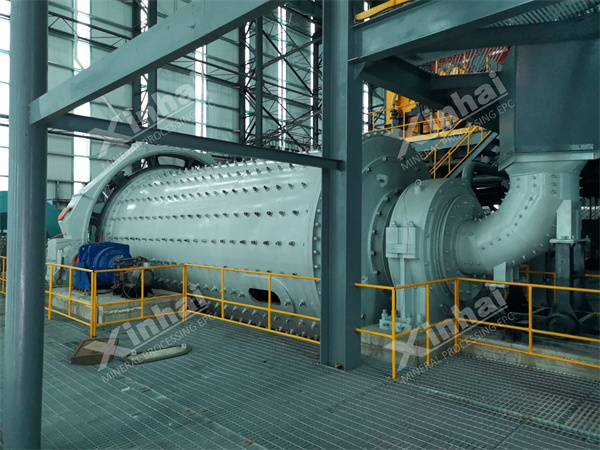Grinding fineness control is a key link in the nickel sulfide ore beneficiation process. Reasonable grinding fineness can effectively improve the nickel recovery rate and concentrate grade. This article will introduce in detail the importance, influencing factors and optimization methods of grinding fineness control in the nickel sulfide ore beneficiation process.
Grinding fineness refers to the degree to which the ore is ground during the grinding process, usually expressed as the percentage of ore particles passing through a certain sieve size in the total ore volume. Reasonable grinding fineness can ensure that nickel minerals are fully dissociated, thereby improving the flotation effect.
If the grinding fineness is too coarse, the nickel minerals may not be fully dissociated, resulting in a lower nickel recovery rate; if the grinding fineness is too fine, it will not only increase the grinding cost, but may also cause ore sliming and affect the flotation effect. Therefore, controlling the appropriate grinding fineness is the key to improving the efficiency of nickel sulfide ore dressing.

2.1 Dissociation degree of nickel minerals
Nickel minerals in nickel sulfide ores are usually closely associated with gangue minerals. Reasonable grinding fineness can ensure that nickel minerals are fully dissociated and improve the recovery rate of nickel.
For example, the main minerals of a nickel sulfide deposit include pyrrhotite, pentlandite, magnetite, etc., and the gangue minerals are serpentine, olivine, pyroxene, etc. Through stage grinding, the mudification caused by over-grinding of serpentine can be reduced and the recovery rate of nickel can be improved.
2.2 Flotation effect
Grinding fineness directly affects flotation effect. Appropriate grinding fineness can increase the surface activity of nickel minerals, making them easier to react with flotation agents, thereby improving flotation efficiency.
For example, a certain nickel sulfide mine adopts a process of two grindings and two selections - coarse and fine grinding - centralized selection. By optimizing the grinding fineness, the nickel recovery rate was increased by 10.5%, and the economic benefits were significantly improved.
2.3 Slitting Problem
Excessive grinding fineness may lead to slitting, which increases the difficulty of mineral processing. Slitting will reduce the selectivity of flotation reagents and lead to a decrease in concentrate grade. Therefore, controlling the appropriate grinding fineness can effectively reduce slitting and improve mineral processing effect.
3.1 Stage Grinding
Stage grinding is to divide the grinding process into multiple stages to gradually grind the ore into finer pieces. This method can effectively reduce over-grinding and improve grinding efficiency. For example, a certain nickel sulfide ore adopts stage grinding, first coarse grinding, then fine grinding, and finally concentration grinding, which effectively improves the nickel recovery rate.
3.2 Closed circuit grinding
Closed-circuit grinding means that during the grinding process, the grinding products are classified by grading equipment, the coarse particles are returned to the grinding machine for further grinding, and the fine particles enter the next process. This method can ensure that the ore reaches the required grinding fineness and improve the grinding efficiency. For example, a nickel sulfide mine uses closed-circuit grinding. By adjusting the parameters of the classification equipment, the grinding fineness is controlled at -0.074mm, accounting for about 80%, and the nickel recovery rate is significantly improved.
3.3 Optimizing Grinding Equipment
Selecting appropriate grinding equipment and grinding media is the key to controlling grinding fineness. Ball mill and rod mill are commonly used grinding equipment. Ball mill is suitable for fine grinding, and rod mill is suitable for coarse grinding. The grinding fineness can be further controlled by optimizing the size and ratio of the grinding media. For example, a certain nickel sulfide ore uses a ball mill. By adjusting the size and ratio of the steel balls, the grinding fineness is controlled at -0.074mm, accounting for about 80%, and the nickel recovery rate is significantly improved.
Grinding fineness control is of great significance in the beneficiation process of nickel sulfide ore. Reasonable grinding fineness can ensure the full monomer dissociation of nickel minerals, improve flotation effect and reduce ore sliming.
Through methods such as stage grinding, closed-circuit grinding and optimization of grinding equipment, the grinding fineness can be effectively controlled, the nickel recovery rate and concentrate grade can be improved, and efficient utilization of resources can be achieved.
In practical applications, the appropriate grinding fineness control method should be selected according to the specific properties of the ore and the requirements of mineral processing to obtain ideal economic benefits.